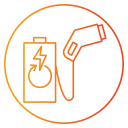Avoid These Common EV Maintenance Mistakes
Chosen theme: Common Electric Vehicle Maintenance Mistakes. Welcome to a friendly, practical guide that helps you care for your electric vehicle with confidence. Expect real stories, clear tips, and inviting prompts to share your experiences. Subscribe for weekly insights and never miss a smarter way to protect your battery, range, and peace of mind.

Battery Care Myths That Drain Range and Longevity
Running the pack too low, too often
Frequently arriving home at nearly zero might feel efficient, but it stresses cells and shrinks your long-term capacity. Aim to operate between roughly 10% and 80% for daily driving, reserving deep cycles for occasional recalibration. What’s your comfortable buffer?
Parking at 100% in heat or deep cold
Leaving a fully charged EV baking in summer sun or freezing overnight accelerates chemical strain. Schedule charging to finish near departure, or target a slightly lower daily maximum. Comment with your preferred target level and climate, and compare notes with readers.
Ignoring periodic battery management calibration
Your battery management system estimates capacity and state of charge, but it benefits from occasional full charge and controlled discharge. A planned calibration helps restore range accuracy. Have you noticed a sudden range jump after a careful recalibration session? Share your story.
Fast Charging and Temperature: Smart Speeds, Longer Life
Using DC fast charging as your daily habit
High charge rates increase heat and stress. Occasional use is fine, but daily reliance can shorten battery lifespan. Mix in slower Level 2 sessions when possible. What’s your weekly fast-charge count? Compare with our community averages and adjust if needed.


Skipping battery preconditioning before a fast charge
Preconditioning brings cells into the ideal temperature window, enabling faster, gentler charging. Many cars automate this when a charger is set as the destination. Tell us whether preconditioning noticeably boosted your charging curve or reduced your wait time at the station.
Software, Diagnostics, and Alerts: Don’t Ignore the Silent Signals
Updates can optimize thermal strategies, charging profiles, route planning, and even tire wear alerts. Waiting months means missing improvements you already paid for. How do you schedule updates—overnight Wi-Fi or cellular windows? Share your best practices to help newcomers succeed.

Software, Diagnostics, and Alerts: Don’t Ignore the Silent Signals
A minor warning today can pinpoint a preventable failure tomorrow. Basic readers and service apps help track intermittent errors. Do you keep a maintenance log? Tell us which tools help you translate codes into smart, timely service decisions without panic.
Tires, Alignment, and Rotation: Weight and Torque Matter
Even a few PSI off can erode efficiency and control. Check pressures monthly and before road trips, correcting for temperature swings. Have a pressure monitor you love? Recommend it below, and note the difference you saw in range and tire wear.
Brakes and Fluids: Regen Helps, Maintenance Still Matters
Lightly exercise friction brakes weekly to scrub surface rust, especially in wet climates. A short, controlled stop sequence will do. Do you have a rainy-season routine? Post your steps and whether it stopped squeals or improved pedal feel over time.
Brakes and Fluids: Regen Helps, Maintenance Still Matters
Brake fluid is hygroscopic; it absorbs moisture, lowering boiling point and inviting corrosion. Follow time-based intervals even with minimal pad wear. When did you last test fluid quality? Share your interval and any tools you use to check moisture content accurately.


Home Charging Safety and Setup: Build a Reliable Routine
Using extension cords or daisy-chained adapters
Long, thin, or coiled cords generate heat and risk fire. Install a properly rated outlet or dedicated EVSE with a licensed electrician. Have you upgraded recently? Share costs, lessons, and whether your charge times and safety peace noticeably improved afterward.
Ignoring dedicated circuits and panel load limits
A dedicated breaker and correct wire gauge protect against nuisance trips and overheating. Consider load management if your panel is tight. How did you size your circuit? Post your amperage, charging level, and whether dynamic load balancing solved evening peak constraints.
Skipping surge protection and backup plans
Whole-home surge protection shields chargers and onboard electronics, while backup options maintain mobility during outages. Do you use a smart plug, UPS for networking, or home storage? Share your resilience plan, and inspire others to prepare before storms strike.
